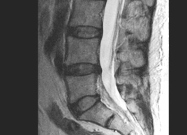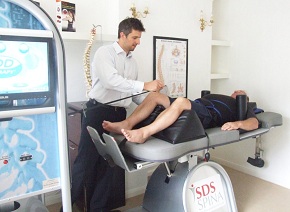We often hear stories of patients complaining of ‘severe’ back pain which when examined under MRI scan reveals very little, if anything, that may suggest a cause of pain.
At this point it is often suggested that the back pain is more of a psychological issue than a mechanical problem: “It’s all in your mind!”.
Last weekend at the Back Pain Show I was talking to one of the Upright MRI providers – Medserena who are opening in London.
In the past, one of the selling points of the upright MRI scanner was that it is more comfortable for patients compared to traditional MRI scanners where the patient has to lie down and enter a very narrow tunnel. For some people, the “lie-down” scanners were simply too claustrophobic, hence the appeal of an open / upright MRI scan.
Upright MRI scans are more expensive than “lie down” scanners since the equipment is quite different (much bigger and more costly). This can deter both self-pay patients and insurance companies from paying for upright scans.
Of course the clinical benefit of the upright MRI scan for low back pain is not so much the comfort, but the ability to see what happens to vertebral structures when they are under load ie when the patient is erect and load bearing (standing up) or sitting upright, rather than supine and non-load bearing (lying down).
Here below are some examples of scans comparing the spine of the same patient on the same scanner supine vs erect and the differences in revealed spinal pathology. The results are impressive:-
As can be seen, there are important differences in pathology which are only revealed when the scan is carried out with the patient upright with the spine under load.
There are only a handful of upright MRI scanners in the UK and this raises some new questions in my mind about the role of MRI scans and implications for treatment schools of thought.
In an earlier post I raised the question that older back pain trials may have been flawed because they were conducted without the benefit of a scan to confirm pathology and thus the ability to appropriately tailor treatment tools to the underlying pathology. (see post)
Now, the question could be:
“Do insights from the results of Upright vs Supine MRI scans raise questions about the proportional significance of the biopsychosocial components of back pain vs mechanical components of back pain?”
What the above comparisons and others like them show is that it is possible for the load bearing effect on spinal pathology to go undetected with Supine MRI scanning in some cases.
When a spinal pathology is detected with an Upright MRI scan, there may be times when alternative treatment plans with an emphasis on functional restoration may be more appropriate.
Images courtesy of Medserena Upright MRI Ltd.
Opinions of the Author.
By Stephen Small
www.SteadfastClinics.co.uk




